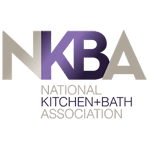There is nothing better than working with a colleague that has his or her s*@! together. That is, they have a consistent personal process for time management and a systematic method for managing tasks. A successful personal process sends the message that an employee is on top his or her goals and is working toward meaningful deliverables and key dates. Moreover, when someone has a consistent personal process, it provides reassurance to management that important details won’t slip through the cracks.
Why cultivate a personal process?
A personal process is really important. It’s one of the first things I look for in a prospective team member and it illustrates a combination of discipline, time management, and productivity. During interviews, I often ask prospective employees how they organize themselves. The wrong answer is, “The first thing I do when I get to the office is go through email.” This is the answer I get about 60% of the time.
What a good personal process looks like
What does a good personal process look like? In golf, a player who lacks personal process will arrive late, head to the range, grab a bag of balls, select a club at random and then hit balls here and there before heading off to the course. A player with an established personal process will work through their bag in a systematic way. He might hit each club in order, hit a specific number of balls at a specific target or keep track of his success rate by club and distance. The best illustration of solid personal process is building in time for planning, executing the plan, recording efforts over time, and making room for analysis in order to identify opportunities for future improvement.
How do you organize yourself at work?
The best way to create your personal process at work is to steal from others that have their s*@! together. Here’s a summary of my personal techniques I have learned from others through the years.
- I use Sunday evenings to review project lists which I have organized by goals, dates and supporting tasks. I have goals defined for 6 months and tasks defined for the next 30-60 days.
- On Sunday evenings, I build a cross-project task list for the week that I write down in a notebook so I can get the satisfaction of physically checking off a completed task. I will also look out two weeks on the calendar to identify any major meetings coming up that I need to prep for.
- Throughout the week I’ll work through the task list from day to day transferring over what didn’t get done from the previous day. If I work through the list faster than expected, I’ll go back to the master list to rebuild the list.
- One other good practice I’ve learned is to assess the number of actual work hours I have in the day. That is, 8 hours less meeting time. As a consequence, I’m conscious of filling up my day with meetings. I also request 30-minute meetings vs. hour meetings to maximize the day. Finally, I keep detailed meeting notes on the back of each daily page so they’re easy to find.
Seriously. Get your s*@! together
A strong personal process can vary greatly from person to person. The key is consistency and discipline. If your personal process is changing every week, it’s not a process. Consistently reviewing lists and commitments on paper is far more valuable than a pretty, multi-colored spreadsheet that you look at once in a blue moon. Take the time to analyze your own process and you’ll find that you can get more done, be a better team member and make more valuable contributions. If you have your s*@! together, send me your resume.
Beck Besecker is the CEO and Co-Founder at 3D Cloud.











